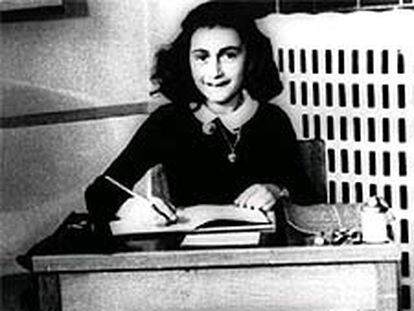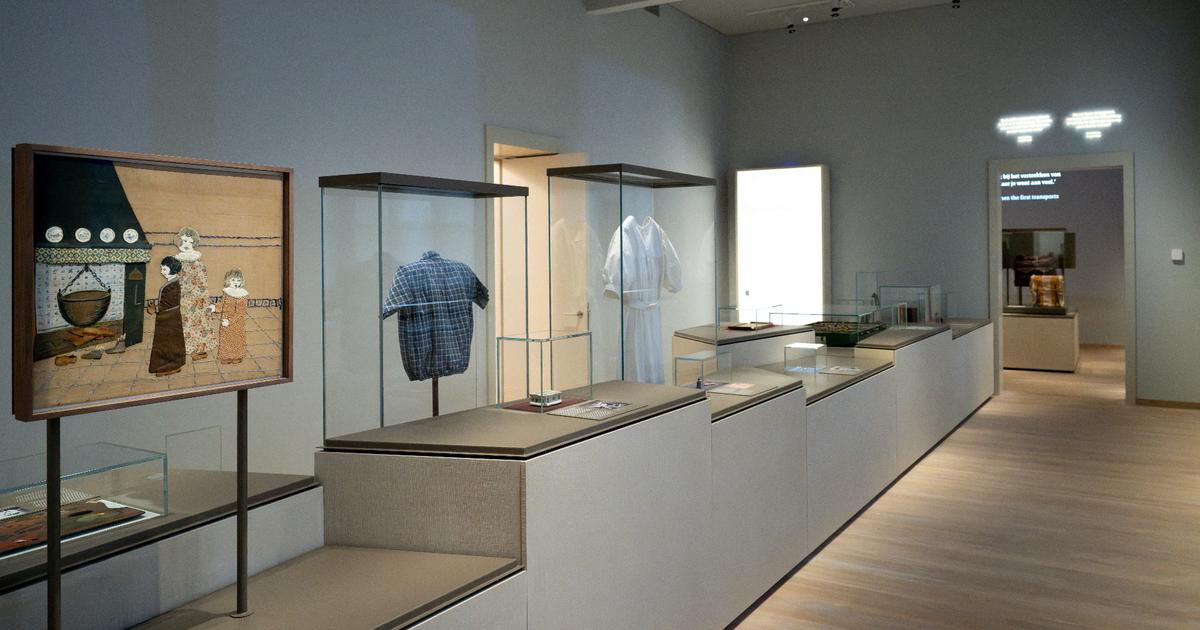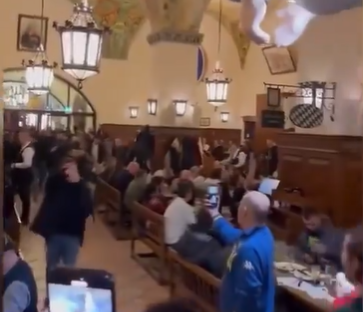Monument to Anne Frank, with a photo of the girl, and her sister Margot at the former Bergen-Belsen extermination camp.sean gallup (getty)
A new investigation, carried out over six years by a team led by Pieter van Twisk, maintains that the girl Anne Frank was betrayed by a prominent notary of the Jewish community in the Dutch city of Amsterdam. According to this theory, the informer was Arnold van den Bergh, who wanted to save his family in exchange for providing the Nazis with the address of the hideout of the author of the most famous diary of the Holocaust.
Still without conclusive evidence, this investigation has been reported this Monday in a book, entitled
The betrayal of Anne Frank
.
Between July 1942 and August 1944, Anne Frank hid with her parents, her sister and four other people in the annex of a building located in the heart of the Amsterdam canals.
Ultimately, they were all arrested and deported to Nazi death camps.
Anne and her sister Margot died at the Bergen-Belsen.
The girl who wrote the famous diary lost her life in February 1945, at the age of 15.
Of the family only the father, Otto, survived.
The arrest of Anne Frank remains one of the mysteries of the Second World War and so far no hypothesis has achieved the consensus of historians.
More information
Anne Frank, open case
The name of the notary who allegedly ratted out the Franks appeared in an anonymous note sent shortly after World War II to the girl's father. The name of the person who wrote it is still unknown today. The original could not be found, but the investigative team has found a typewritten copy made by Otto Frank himself in a police file. The document was in the file of the son of the policeman who followed the trail of that information.
In that paper, Otto Frank was told that the details of his shelter “were reported to the Jüdische Auswanderung (JA) by A. van den Bergh, who was then living near the Vondelpark in Amsterdam. In the JA they had a complete list of addresses provided by him”, the writing ended. The JA was the German department of Jewish emigration in charge of sending them to concentration camps in Germany and Poland between 1941 and 1943. This information focused the investigations of Van Twist's team, although it had already been analyzed without success after the war. It did not prosper then because the police considered that the notary had been accused without reason, "whose integrity was beyond any doubt." Despite his collaboration, Van den Bergh was arrested in 1943 by German forces.
"Given the dates, he should have passed the information to his captors from a concentration camp and around 1944. It was implausible," Van Twisk told Dutch television. However, the notary was not in a concentration camp, as they have now been able to verify. Otto Frank only revealed the existence of the note in 1964, when the betrayal of his family was reinvestigated.
Van den Bergh was a prominent member of the Dutch Jewish Council and tried in every way to prevent his and his family's deportation. "He got a reprieve from the Nazis because of his position, which he took advantage of to look for hiding places for his daughters and moved with great intelligence," says Van Twisk. Finally, the moratorium on deportation expired and he had also had an argument with a member of the Dutch National Socialist Movement (NSB), a party related to the Nazis and the only one allowed then by the invading forces. "At that time, he must have provided the Germans with the addresses of hiding places of Jewish citizens," the new study concludes.
Vince Pankoke, a retired FBI agent who has collaborated in the investigation, has declared that this has been the longest and most difficult case of his career "because of the mountain of data, lost documents and deceased witnesses."
In statements collected by the Dutch media, this former FBI member admits that in the absence of DNA evidence or filming "you have to rely on circumstantial evidence, but our theory has an 85% chance of being right."
“In any case, the only bad guys here were the Nazis.
To indict Van den Bergh, you first have to ask yourself how far we would have gone to save our loved ones."
Anne Frank, in an undated image.
The team adds that Ana's father considered this betrayal possible, but they believe that he preferred not to go ahead with this matter to confirm it for fear of an anti-Semitic reaction. “I knew that Van den Bergh, who died in 1950, had daughters, like him. He would have had to muddy his name posthumously and harm his descendants," according to Pankoke.
They also point out that the Jewish Council drew up a list of hiding places for members of their own community to show the Nazis that they were cooperating. Prinsengracht 263, the street of Anne Frank and her family, could have been included in that list. As a member of the Council, Van den Bergh would not have had a hard time getting his hands on that file. In his history it is known that in 1940, as a notary, he was in charge of the controversial sale of the art collection of the important collector Jacques Goudstikker, for which he contacted Alois Miedl, a friend of Hermann Göring. The latter was the commander in chief of the Luftwaffe, the German air force during World War II. Göring oversaw the looting of the catalog of works by Goudstikker, who fled the Nazis in 1940 leaving behind more than 1,200 paintings, many by Old Masters.
The search carried out now for the study of the denunciation has required a team of 23 people who have collected and reviewed documents from the time and at least 30 theories about what happened in all kinds of files.
They have also applied artificial intelligence to analyze 66 gigabytes of information and a map has been drawn with the connections between the raids carried out in other hiding places such as the one used by Anne Frank and hers.
The puzzle about the fate of the Frank family and the other four in hiding remains incomplete.
Who wrote the note addressed to the father of the aspiring writer is one of the pieces still missing.


/cloudfront-eu-central-1.images.arcpublishing.com/prisa/7C3LUM4R75AU5MMLTKFXM4GDUA.jpg)

/cloudfront-eu-central-1.images.arcpublishing.com/prisa/OFIE3IOCHJH4RI645WWWIXYPFM.jpg)










